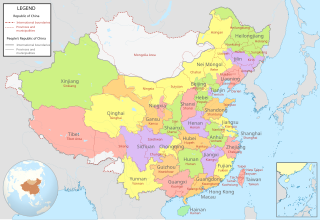Dayu or Da Yu may also refer to:
Longmen may refer to:

Adenophora is a genus of flowering plants in the family Campanulaceae, the bellflowers. Plants of this genus are known commonly as ladybells. Most of the species in the genus are native to eastern Asia, with a few in Europe. Many are endemic to either China or Siberia.

The National Basketball League (simplified Chinese: 全国男子篮球联赛; traditional Chinese: 全國男子籃球聯賽; pinyin: Quánguó Nánzǐ Lánqiú Liánsài) is a professional basketball minor league in China, called Chinese Basketball League (CBL) before 2006. It is commonly known as the NBL, and this name (spelled out in letters) is often used even in Chinese.
Chang'an was the capital of several Chinese dynasties, located on the site of present-day Xi'an, Shaanxi.
Wenquan is a common name for places in the People's Republic of China:
Gucheng, formerly romanized as Ku Ch'eng, may refer to the following places in China:
Yongfeng may refer to:
Yuquan may refer to:
Shiqiao could refer to the following locations in China:
Daqiao could refer to:
Chengbei (城北区) is a district of Xining, Qinghai, People's Republic of China (PRC).

The history of the administrative divisions of China after 1949 refers to the administrative divisions under the People's Republic of China. In 1949, the communist forces initially held scattered fragments of China at the start of the Chinese Civil War. By late 1949, they controlled the majority of mainland China, forcing the Republic of China government to relocate to Taiwan.
Events from the year 1962 in China.

The national archaeological park of China is a designation created by the State Administration of Cultural Heritage (SACH) in 2009 to preserve and present large-scale archaeological sites. National archaeological parks must have previously been designated as Major Historical and Cultural Sites Protected at the National Level, and are considered to have high historical, cultural, and academic value. They include ancient settlements, cities and towns, palaces, temples and caves, engineering and manufacturing sites, and mausoleums and cemeteries. Many parks also have on-site museums.

In 2001, the Institute of Archaeology of the Chinese Academy of Social Sciences organized a poll for China's 100 major archaeological discoveries in the 20th century. The participants included eight national-level institutions for archaeology and cultural relics, provincial-level archaeological institutes from 28 provinces, municipalities, and autonomous regions, as well as from Hong Kong, the archaeological departments of 11 major national universities, and many other scholars in Beijing. After three months and three rounds of voting, the results were announced on 29 March 2001 and were published in the journal Kaogu (Archaeology). In 2002, the Chinese Academy of Social Sciences Press published the book China's 100 Major Archaeological Discoveries in the 20th Century (二十世纪中国百项考古大发现), with more than 500 pages and 1,512 pictures.
Jiuxian may refer to the following places in China:
Events from the year 1963 in China.